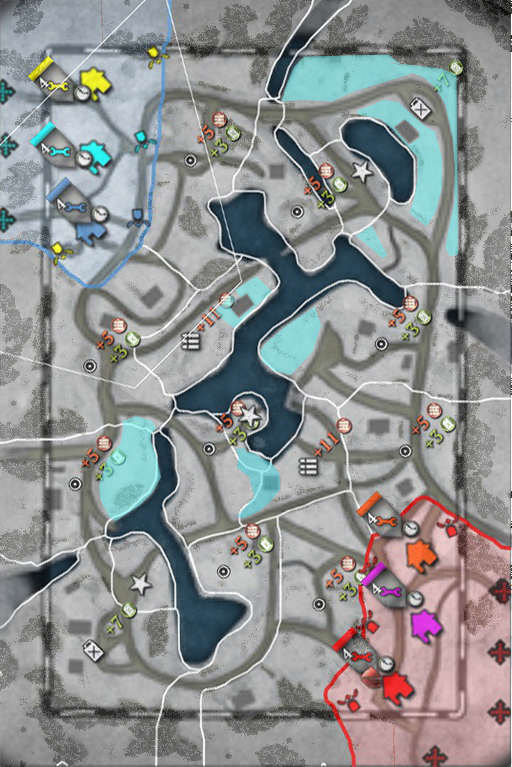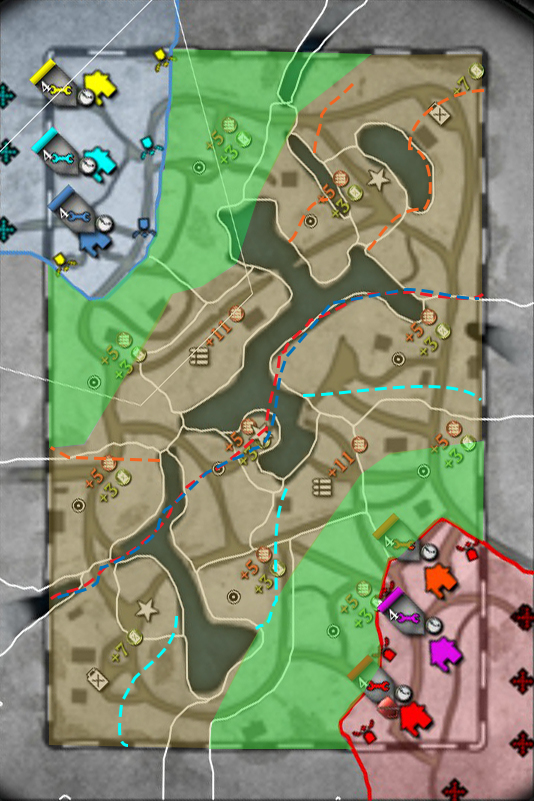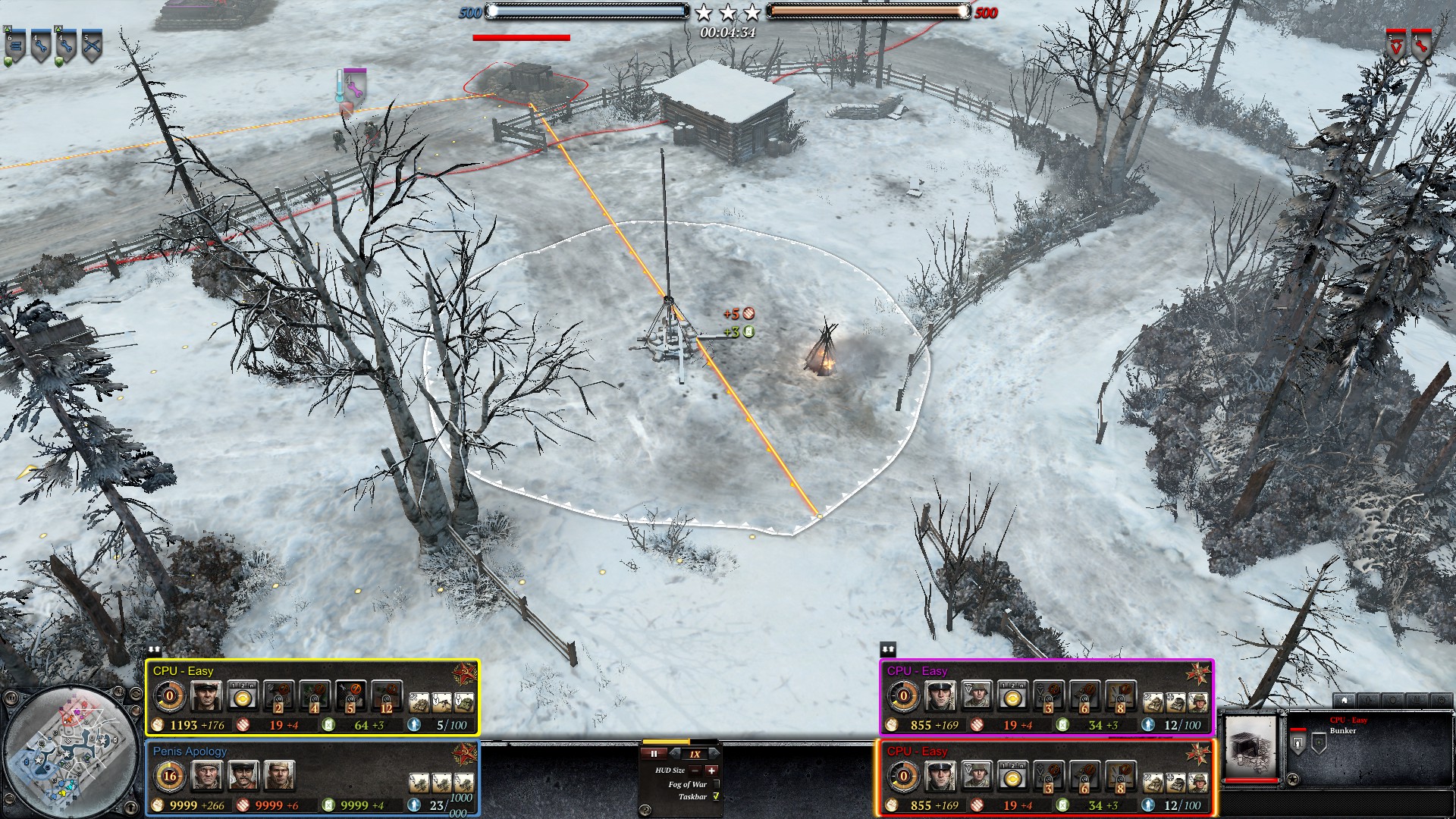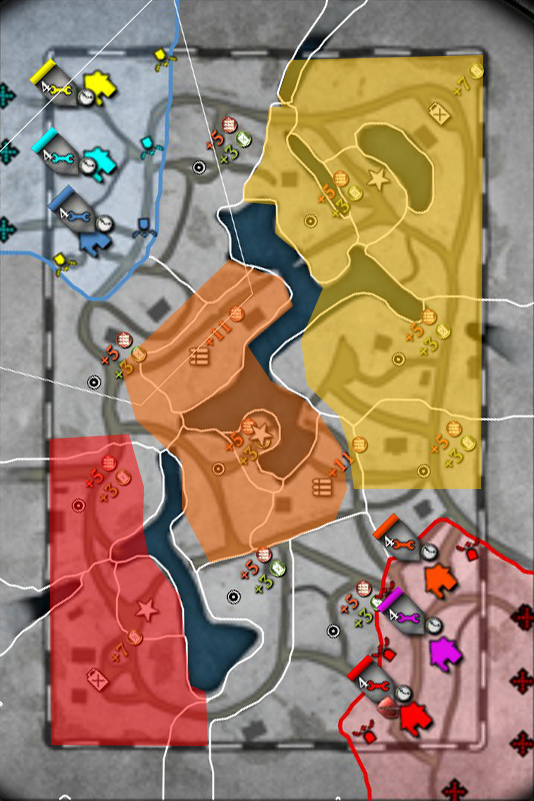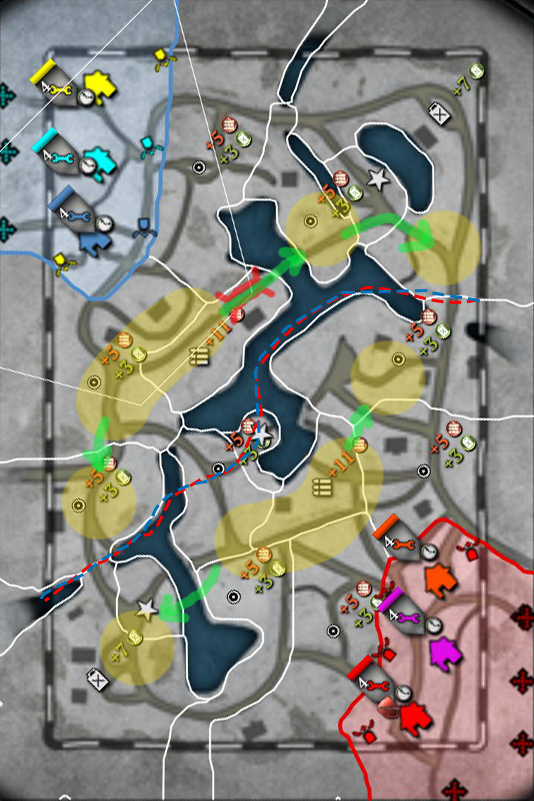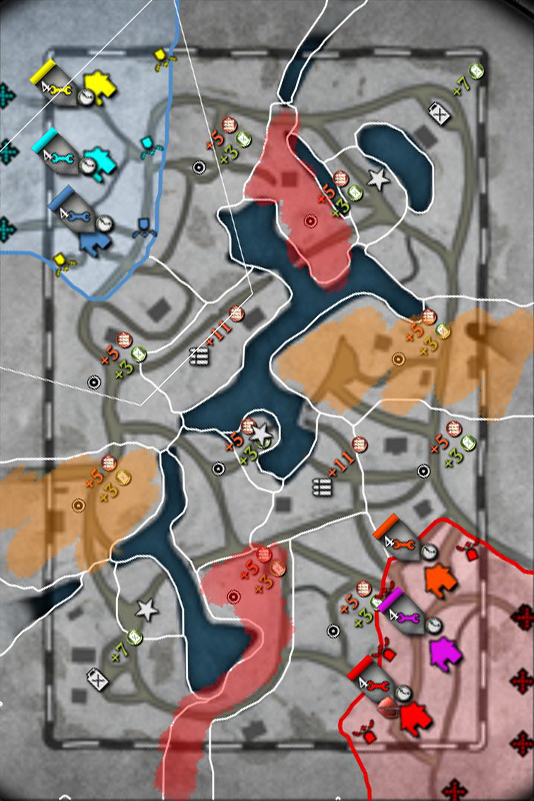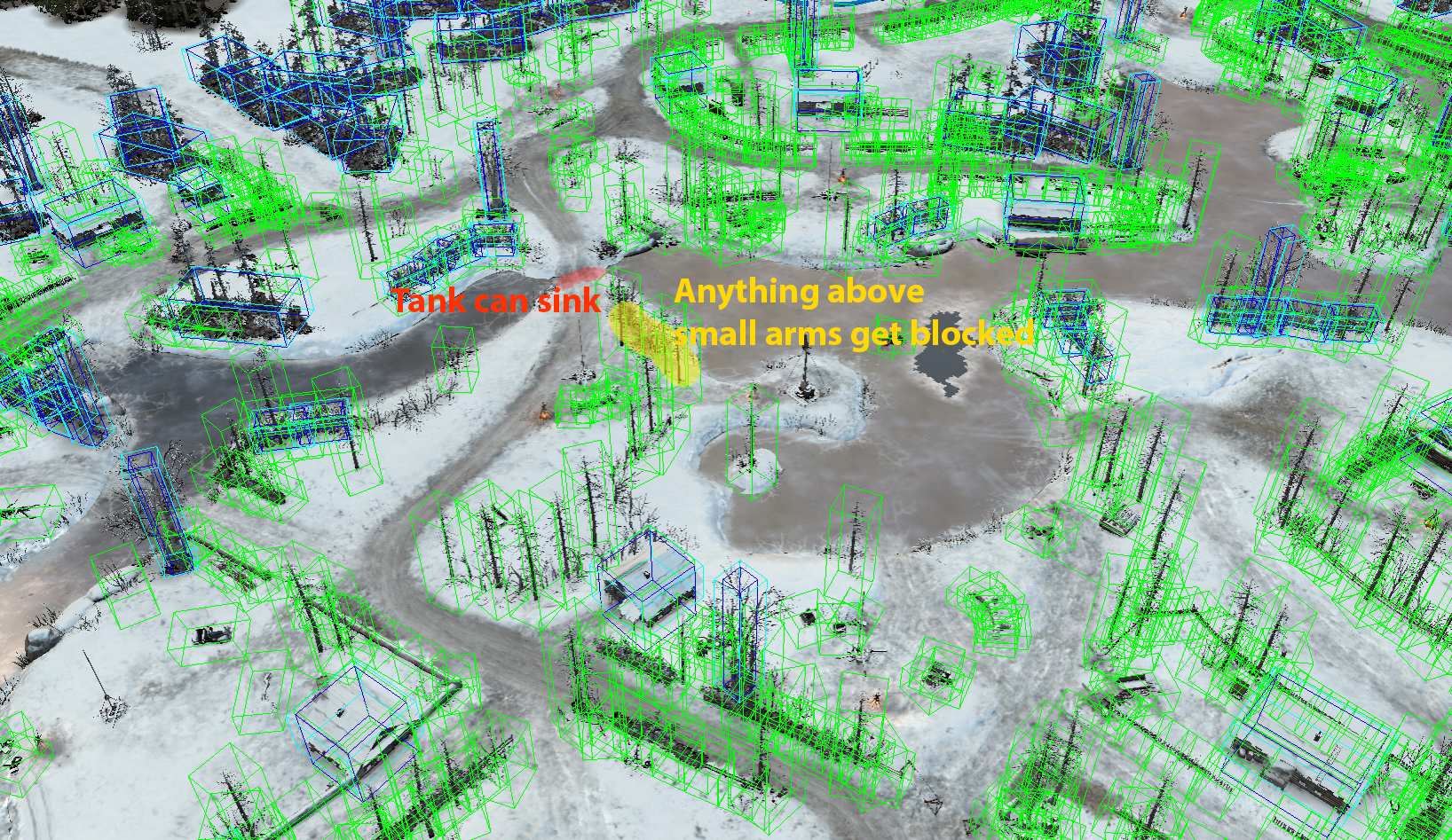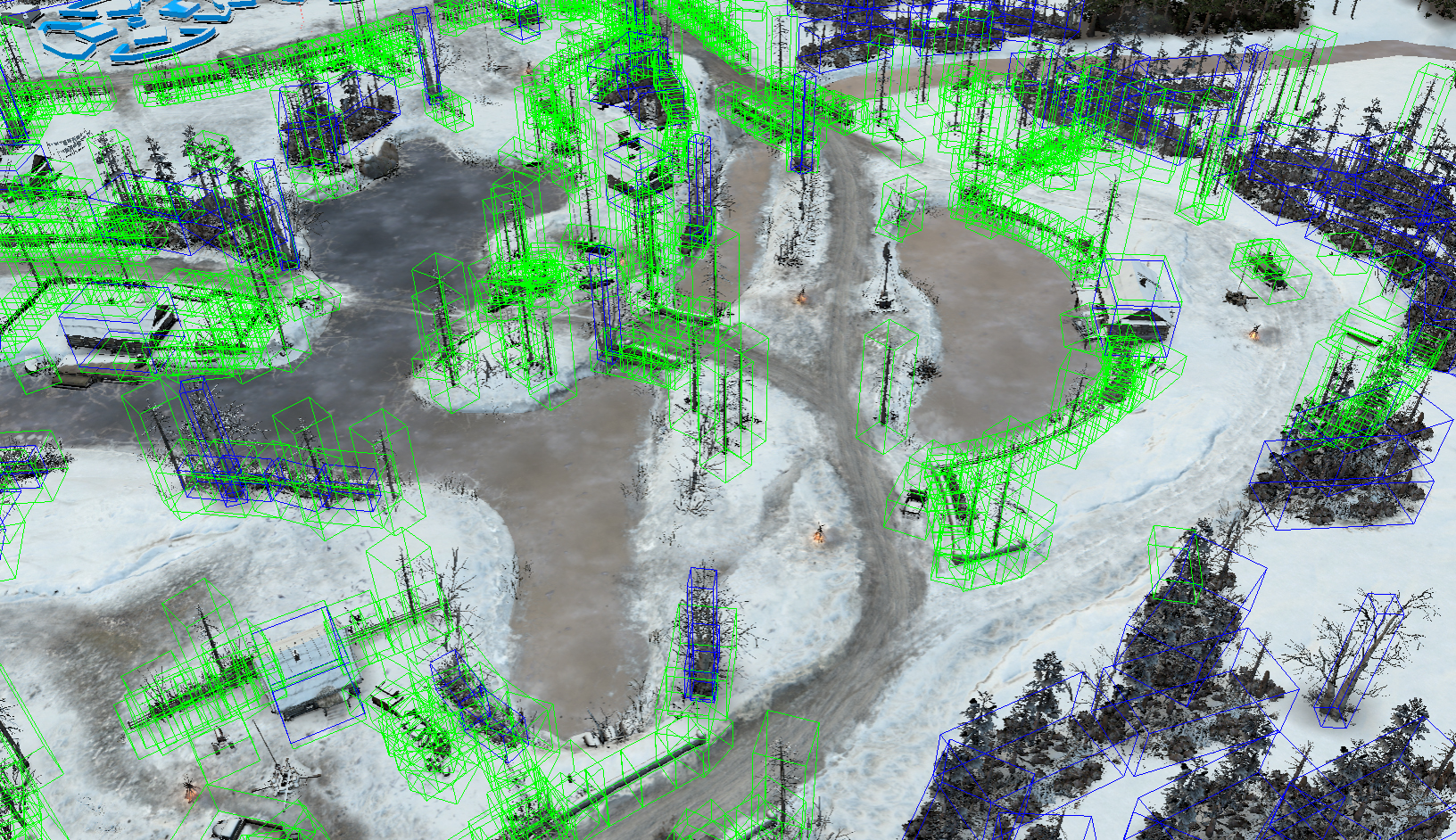Introduction
Rzhev winter is one of the very original maps. I played this map 200+ times and while far from perfect, the map is reasonably sized for 3v3 match up. Size is the most important factor I take into account when judging a map. I will be talking about my thoughts/perspectives and tips about this map.
*To me, Rzhev Winter is more of a 3v3 map, so I will only focus on 3v3 aspect.
Obviously with the removal of deep snow, things have changed. More routes of attacks have opened up and the map is less prone to arty-fest. However the imbalance between the top and bottom spawn still remains at large.
*To me, Rzhev Winter is more of a 3v3 map, so I will only focus on 3v3 aspect.
Obviously with the removal of deep snow, things have changed. More routes of attacks have opened up and the map is less prone to arty-fest. However the imbalance between the top and bottom spawn still remains at large.
(1) Overview of the Map
(1.1) General Information
(1.2) Rear Territories
Figure 1.23 & 1.24 Other reasonably safe RPs.
Rzhev Winter is open through and through which helps battles/skirmishes to spill over farther away from the middle of the map. There is only one truly safe Resource Point for a cache for each team. Rzhev Winter also has nine RPs instead of usual 10, which means 31 munition and 19 fuel per minute should be the least amount of standard income considering the ninth RP would be in constant contest in an even match. The map can be divided into three zones and since a zone can easily involve four to six players, a unit or two can easily harass the other vacant zones. For this reason, it is not a terrible idea to dedicate a unit/bunker and mines to defend your Cutoff Point or Fuel Point.
(1.3) Frontline Territories
The frontline span in between both FPs and include the ninth RP and the middle Victory Point. The frontline can be divided into three zones both easily and intuitively which can cause a match to play out as three 1v1s. That should be avoided as the whole point of 3v3 is to work as a team. It is also here that there are many glaring balance issues that ultimately makes the map favoured towards the southern team. I will go into more detail in the next chapter.
(1.4) Building Visions
North Side
South Side
(2) Map Tactics/Strategies and Faults
(2.1) Staging Area
As seen on the diagram above, the staging areas for either sides differ in terms of their distances from each other and the access routes in between them. The northern side staging areas are farther apart and have inferior access routes (ice and narrower) which gimps their ability to flow between the fronts. This means the southern FP and CP are easier to protect than the northern counterparts under same circumstances and that the southern team is going to have more initiative in terms of deciding where to fight. As far as I can see, there are no counter advantage that the northern team gains from the map that evens out the balance scale.
(2.2) Left VP/Fuel Sector

Figure 2.21 Initial engagement.
Whilst the sector clearly belongs to the southern team, the northern team can gain a foothold initially using the buildings. Make sure to NOT lose the building. If the attacker seems to be hard on about holding the sector, the defenders better focus on taking it back as soon as possible. After initial fallback from the sector, a suppression platform and a few mines can deter the attacker from trying to push back in... most of the time.
Figure 2.22 Red: semi-sneaky building grab, Yellow: usual mine spots.
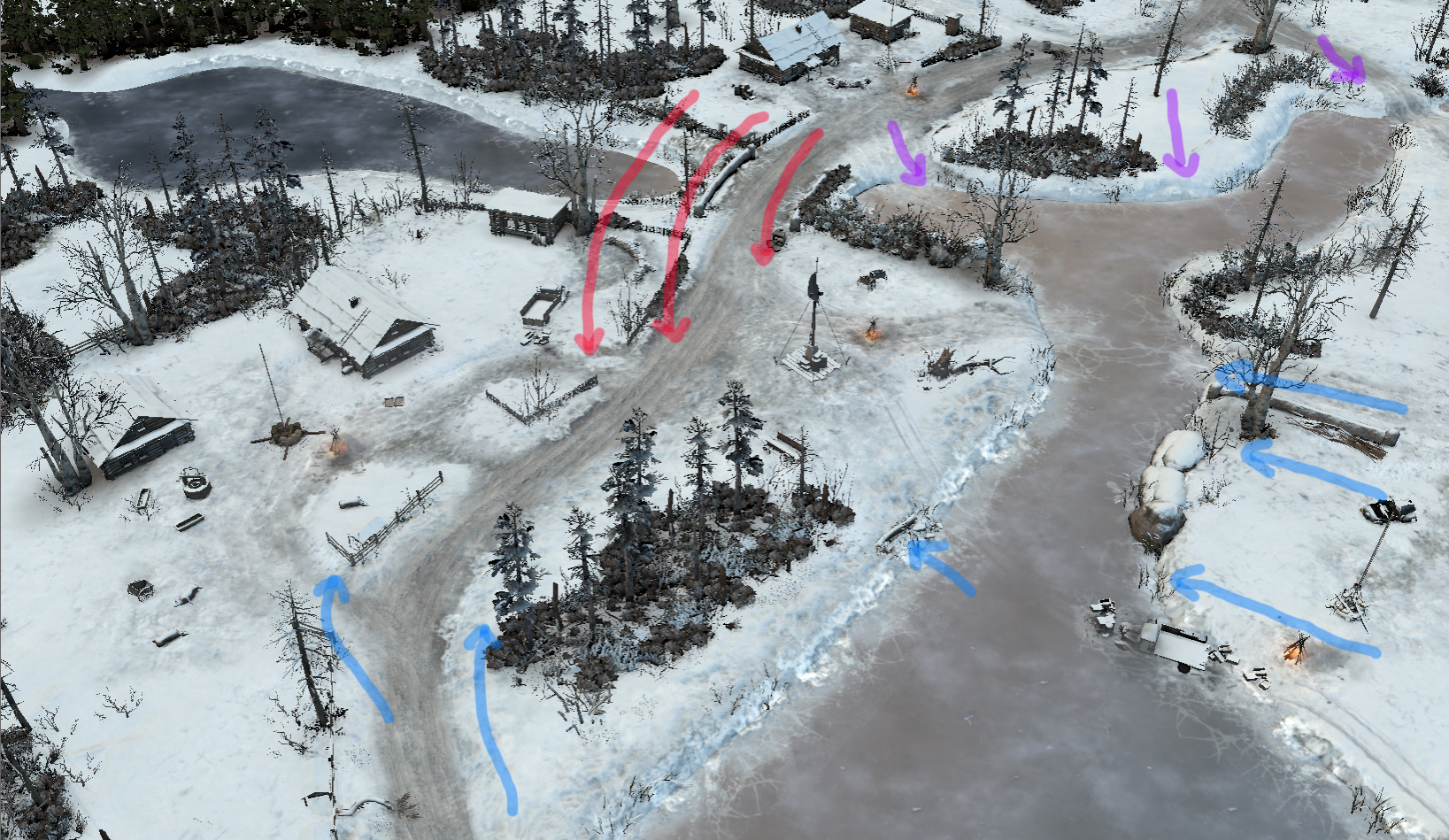
Figure 2.23 Mid-game push, purple indicates good position that the supporting aggressor can take.
During the later stages, the attacker might come with some armour, support weapons and a mine sweeper. By that time the defender will have more units as well and get into advantageous position quickly. If the attacker is smart, he will have his teammate in reserve watching his back but if he does not, it would be an excellent chance to punish the aggressiveness with help of teammates.
Figure 2.24 How to cap the fuel.
What my team likes to do is for one of our builder unit to go for the fuel right away while another captures the back territories.
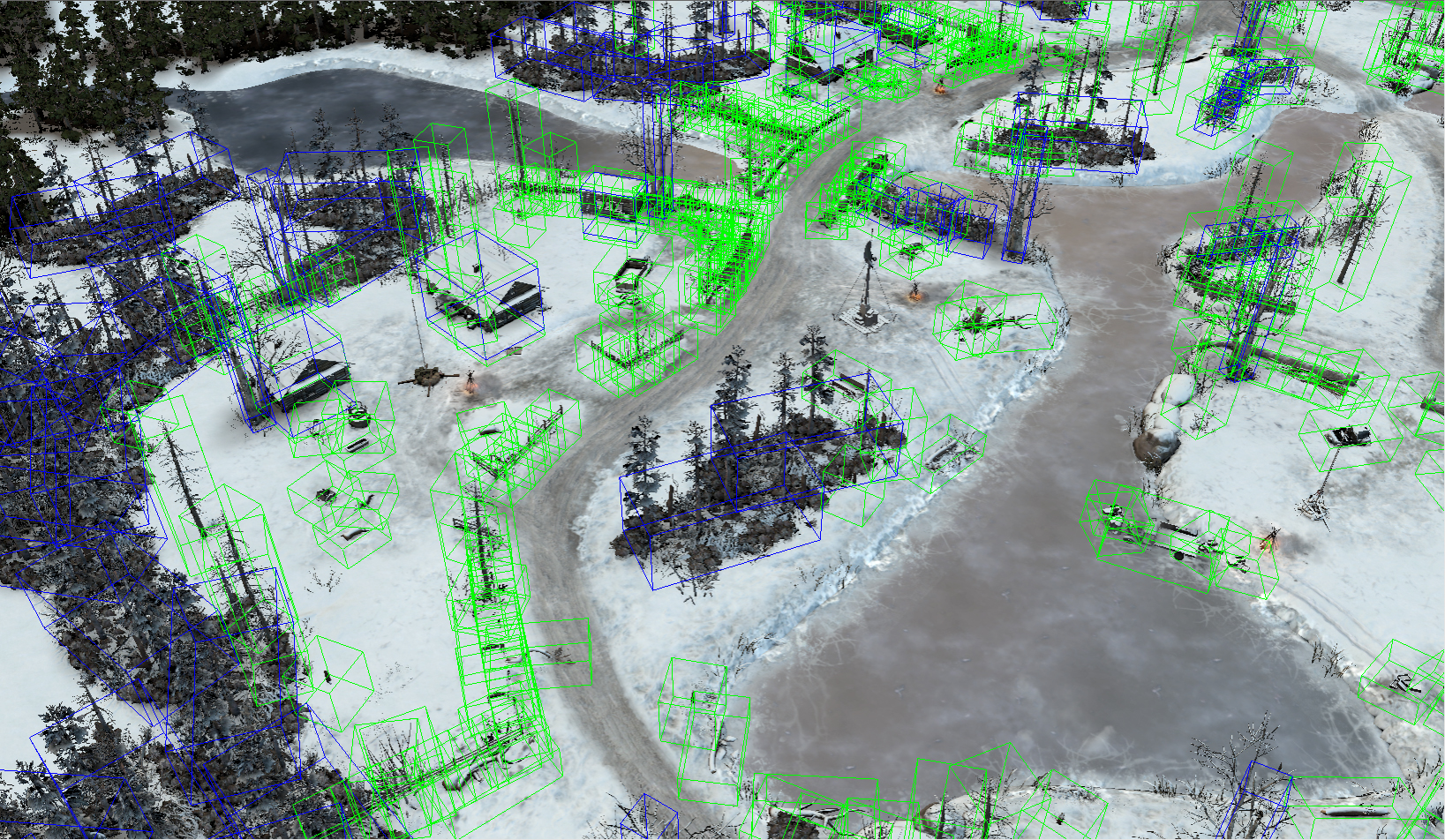
Figure 2.25 Shot blockers indicated by green boxes and shot/vision blockers, blue..
(2.3) Middle VP/Extra Resource Sector
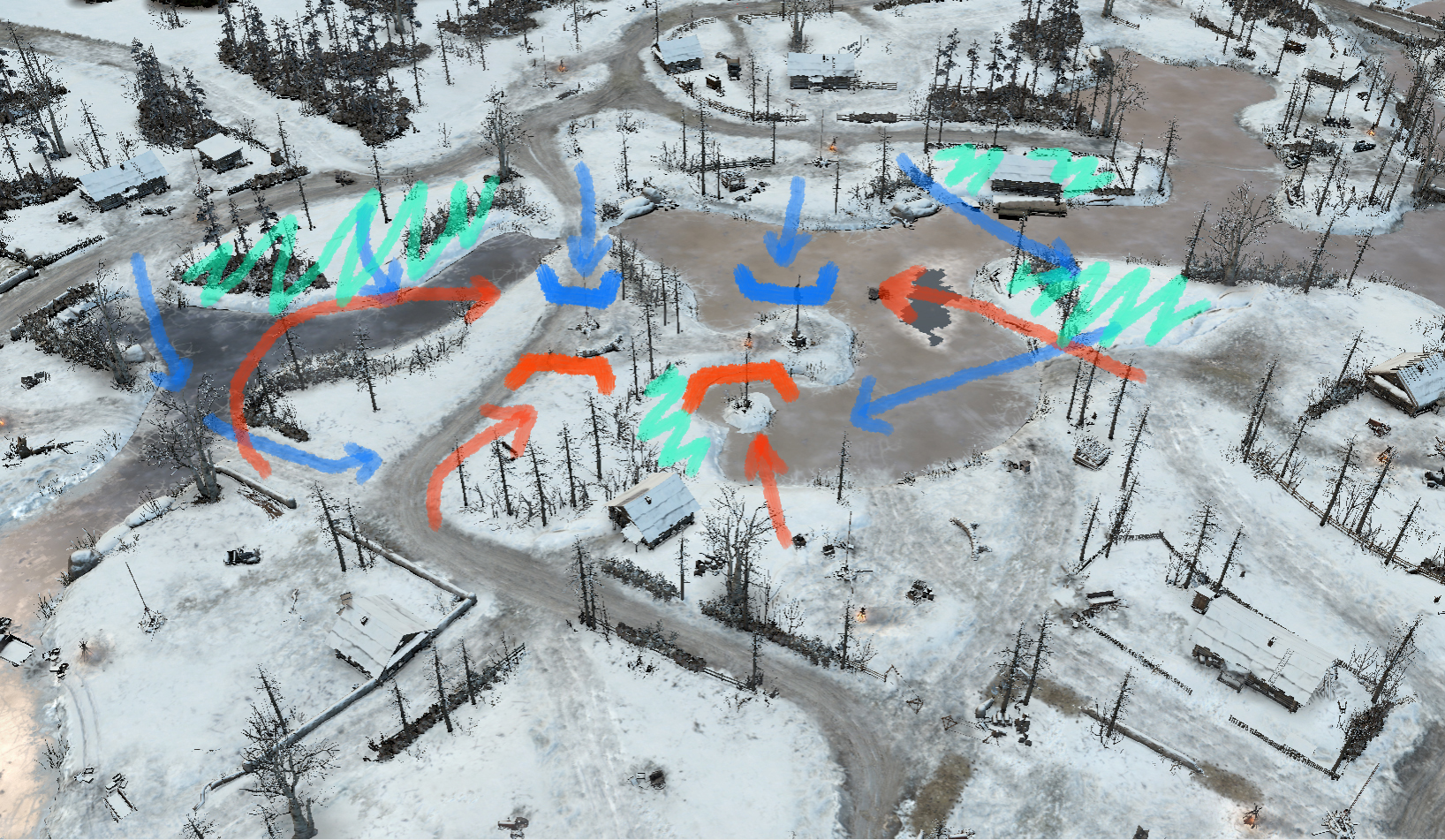
Figure 2.31 Usual fighting pattern with heavy snow indicated.
The general rule of thumb is that you should not be on ice unless forced to. The problem is that this region is almost all ice... for the northern side. The southern side has landmass that is directly connected to their staging area. This advantage cannot be understated. The southern side also has a building which is somewhat useful in the defense of the middle.
Another problem is caused by the ninth RP and the middle VP. All the other points are favoured towards one team or another. The northeastern FP is supposed to be the northern team's and etc. But ninth RP and middle VP do not have set ownership. That naturally draws most battles to this region where the southern team clearly has an advantage. Southern team's CP is very close to / part of the staging area , which means FP cutoff move for the northern team is very hard. Combined it with the fact that northern CP is more isolated (same case when comparing the southern FP to the northern one), you have the southern side having initiative, advantage when attacking/defending middle and being less prone to cutoff/harassment maneuvers.
Although middle is a very important sector, you can choose to focus on flanks. Just do not leave it empty as it will be like leaving a huge gate open.
In an intense match, it is possible for the whole ice area immediately around the middle VP to be non existent due to heavy indirect fire. Make sure you are aware that your units will have to use the narrow landmass on the left to capture the VP.
Figure 2.33 Floodgate opened.
(2.4) Right Cutoff/VP/Fuel Sector
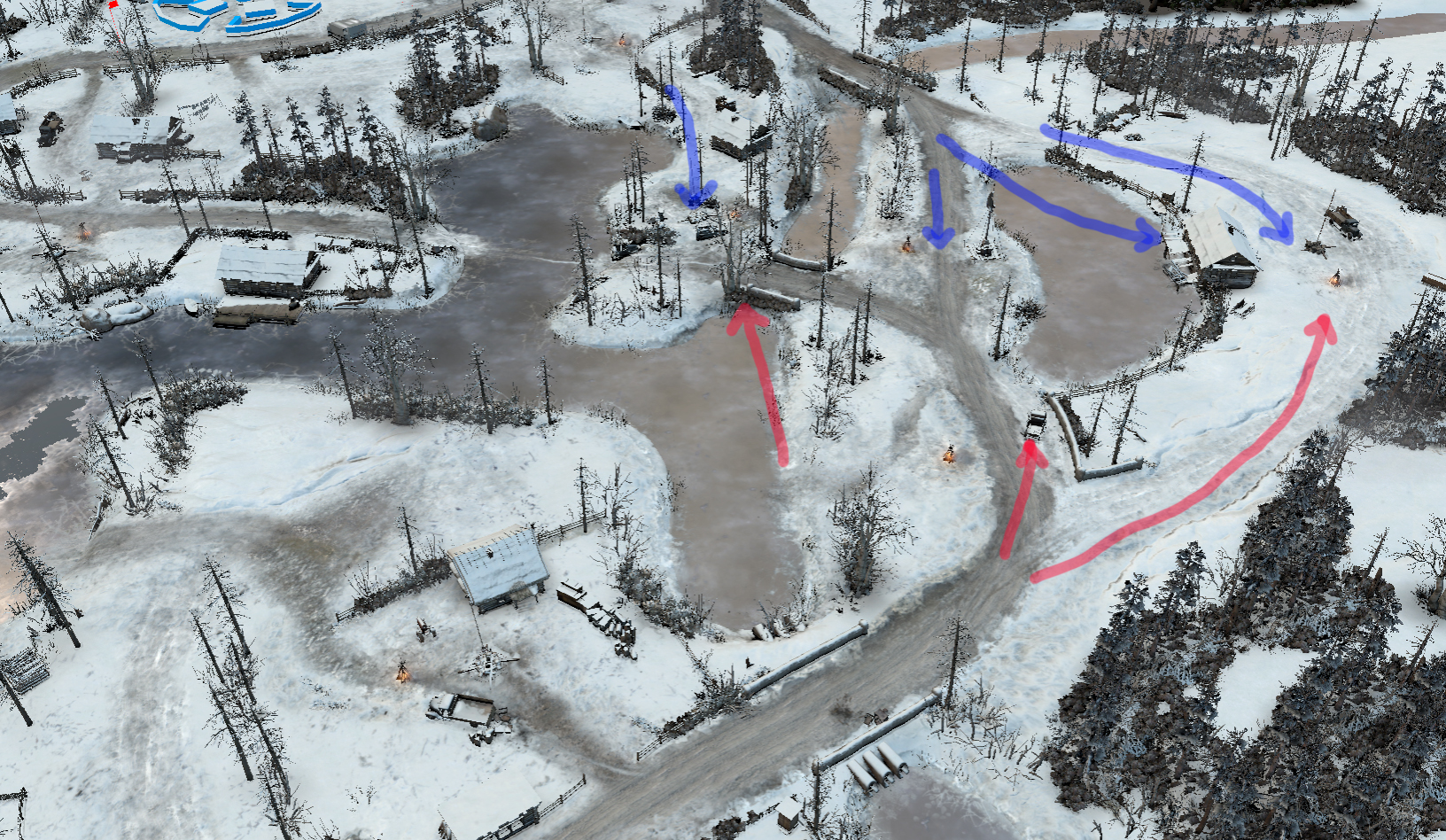
Figure 2.41 Possible initial engagements.
Whilst the sector clearly belongs to the northern team, the southern team can gain a foothold initially using the building. Make sure to NOT lose the building. If the attacker seems to be hard on about holding the sector, the defenders better focus on taking it back as soon as possible. After initial fallback from the sector, a suppression platform and a few mines can deter the attacker from trying to push back in... most of the time.
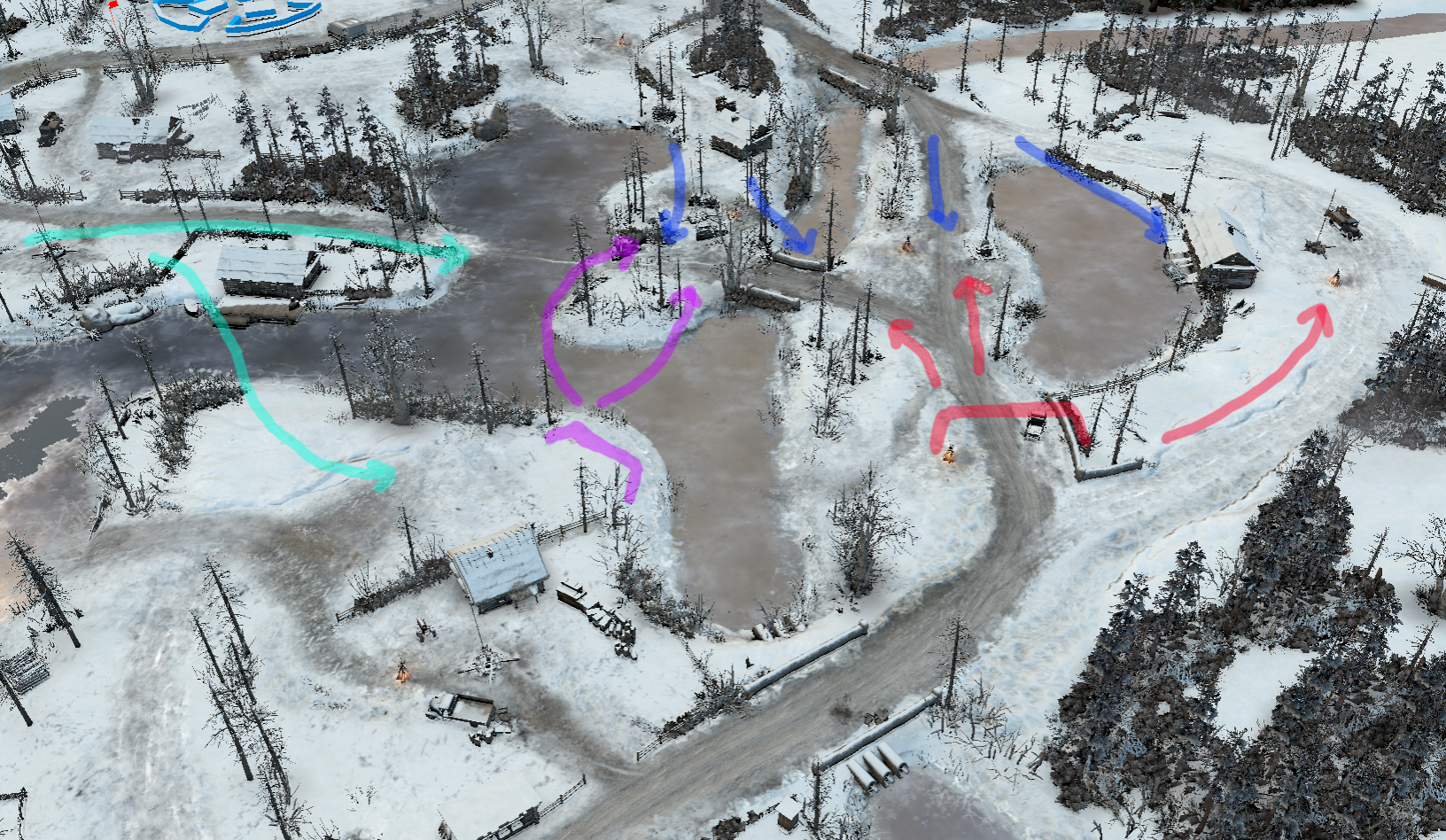
Figure 2.42 Possible later stage engagements.
During the later stages, the attacker might come with some armour, support weapons and a mine sweeper. By that time the defender will have more units as well and get into advantageous position quickly. If the attacker is smart, he will have his teammate in reserve watching his back but if he does not, it would be an excellent chance to punish the aggressiveness with help of teammates.
Figure 2.43 Usual mine spots.
Figure 2.44 Some tips.
What my team likes to do is for one of our builder unit to go for the fuel right away while another captures the back territories.
The northern VP, FP and CP are further apart from each other then the southern counterparts and they are farther away from the main/middle staging area. This makes them easier victims to harassment if not guarded by a unit for each point. The northern CP is also so much closer to the southern team than the northern FP. Therefore the southern team might focus on the CP rather than the FP directly.
(3) Faction Tactics
(3.1) General Tips
- Rzhev Winter is one of the more open maps so being mobile is more imporatnt usual.
- Rzhev Winter is open but not barren. Perfect for snipers.
- Being an eastern front winter map, you have to keep an eye out for blizzards. If you cannot avoid it, enjoy it!
- Do not stay on top of ice. Do not let your tank engage on ice. Not only enemy fire can sink the tank, you might get unlucky and blow the ice right below you, thus sinking yourself.
- With such a big ice field in the middle, the game can turn into artillery fest between the north and south landmass separated by the ice. Make sure you are up to the challenge.
- Make sure to harass whenever you can. There are maps like shittlebruck that do not let you, so take advantage of it when you can!
- There are many good buildings and important building snatches in the beginning. Take them before your enemy.
(3.2) Allies Specific
- Generalist tank. Sure, ISU-152 and SU85 will keep Germans at bay, but if you wanna make a quick insertion and make a big play on the other side (which might be needed because Germans are better at a slug-fest), you need T34/76s!
- Katyushas. Let us face it. Katyusha is damn good and in most cases, Katyusha is the one which is going to give Allies the upper hand when it comes to indirect fire.
- Because this map can turn into a slug-fest in the middle, always have ISU-152 as an option.
(3.3) Axis Specific
- S-mines on ice. Crush the signs for maximum effect. S-mines on ice sink tanks and heavy weapons very well.
- Bunkers on undefended cutoff/victory/fuel point. As a German faction, you will be more focused, so use bunkers to defend against harassment.
- HMG42s. Even before quadruple buffs, it was still very useful in 3v3+, especially on open maps. Now more ass-kicking then ever, it is stupid to forgo this machine.
- OKW healing base close to the frontline in the staging areas can be nice, but unless it is used to push to frontline forward, the FHQ will come under heavy fire come mid game.
- I have seen OKW base set up near the edges of the map (bottom left or top right), presumably to defend the FPs. This not only screws with retreat pathing but also discourages helping your teammates on the other fronts.
- Jagd Tiger or Elephant will go a long way to nullify squad-wiping ISU-152 across the ice.
Conclusion
Rzhev Winter is a fun map. Grossly unbalanced and seeing your tanks fall into eternal depth on the same place where the water is less than one feet deep in the summer version is not fun but it is open and decently sized. Blizzard and deep snow can be annoying but just because it is open, great maneuvers are very possible in Rzhev Winter.



